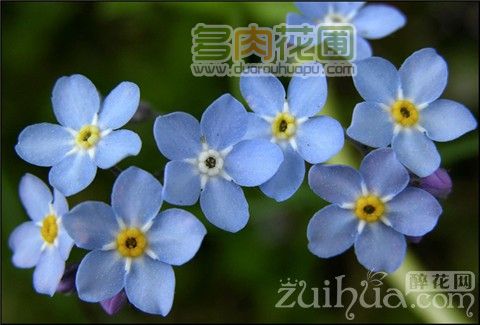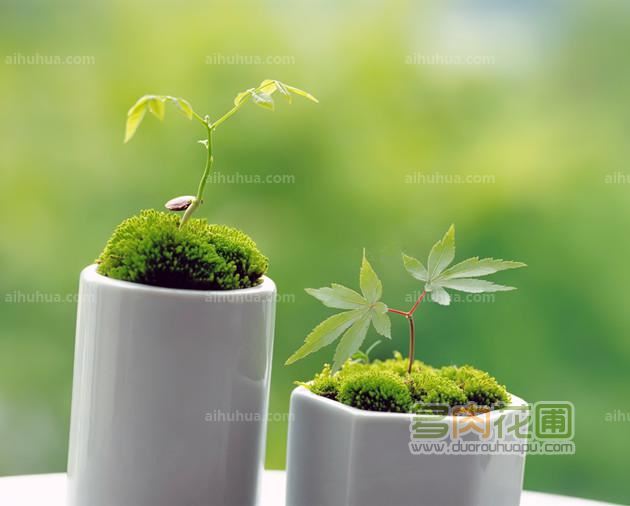Maintenance methods of family potted flowers in autumn
1. The supply of water and fertilizer should be moderate.
After autumn, the management of water and fertilizer should be treated differently according to the habits of different flowers. For sweet-scented osmanthus, camellia and rhododendron which bloom once a year, liquid fertilizer mainly based on phosphate fertilizer should be applied 2 or 3 times in time to promote flower bud differentiation and bud formation, so as to achieve many flowers, large flowers and colorful flowers. Otherwise, there are not only fewer flowers and small flowers, but also the phenomenon of falling buds; for rose, Milan and jasmine that bloom many times a year, they should continue to provide sufficient nitrogen, scale and potassium water and fertilizer to promote their continuous flowering. After entering October in the northern region, flowers that do not blossom in autumn and winter and enter dormancy are generally no longer fertilized, and the amount of water should be gradually reduced to facilitate overwintering. For flowers that bloom in autumn, winter or early spring, normal fertilization and watering can be continued according to the actual needs of each kind of flowers, but excessive water and fertilizer should be avoided, which will affect budding and flowering.
2. enter the room at the right time
After entering October, most of the potted flowers in the northern region should be moved into indoor maintenance one after another according to the cold resistance to avoid cold damage. The specific time to enter the room should be determined according to the type of flowers. Do not rush to the room, because entering the room too early will affect the accumulation of nutrients, which is not conducive to fertility in the coming year. Therefore, under the premise of not suffering from cold injury, it is appropriate to enter the room a little later.
Maintenance methods and daily management skills of forget-me-not family potted plants
Forget-me-not, is a common ornamental flower, its ornamental value is extremely high, with a certain decorative role, often used in the living room, study, office decoration, loved by many flower friends. So, do you know what are the cultivation techniques and maintenance methods of the forget-me-not family? Today, the editor will introduce the relevant knowledge to you in detail.

When cultivating forget-me-not in open field, the sandy loam with ventilation and sunny, high terrain and rich organic matter should be selected as a high border, and mature organic fertilizer should be applied. When the seedling grows 1 or 2 true leaves, it is not easy to survive if the transplant is too late. It was colonized when 4 or 6 true leaves were grown. After planting, more water should be irrigated in the early stage of growth, and liquid fertilizer dominated by nitrogen fertilizer should be applied for 1 or 2 times. Watering less after pulling out the mullion, in order to improve the hardness of the flower stem, it is necessary to apply liquid fertilizer dominated by phosphorus and potash fertilizer for 1 or 2 times, so that the flower color is bright and the plant is strong. When the plant grows to a height of about 20 cm, it is necessary to draw a net and set up a support to prevent lodging.
Don't forget that when I plant in a pot, it is appropriate to plant 2-3 plants in each pot. The soil for pot cultivation is the same as that for raising seedlings. Before planting, add cooked bean cake and so on as base fertilizer. After planting, it is cultivated in the sunny place. It is generally watered once a day in spring and autumn, and the temperature is high in summer. Water should be irrigated once in the morning and evening every day to maintain the humidity of the basin soil and reduce the temperature of the basin soil. During the growth period, there is no need to apply too much topdressing, generally apply thin rotten bean cake water or compound fertilizer once or twice a month. When applying liquid fertilizer, avoid splashing liquid on the leaf surface.
That's all I know about forget-me-not today. I hope it will be helpful for flower friends to read this article. If you want to know more about forget-me-not, please continue to pay attention to the succulent flower bed, and we will provide you with more relevant knowledge.
Maintenance methods and daily management skills of family potted plants of Luohansong
Luo Han Song, is a common ornamental flower, its ornamental value is extremely high, with a certain decorative role, often used in the living room, study, office decoration, loved by many flower friends. So, do you know the cultivation techniques and maintenance methods of Luohansong family? Today, the editor will introduce the relevant knowledge to you in detail.
1. Soil: Japanese Luohansong has strong adaptability and lax requirements on soil, and likes to be born in loose, fertile and well-drained sandy soil.
2. Watering: Luohansong is not a plant of Pinaceae and is not resistant to drought. On the contrary, Luohansong is resistant to Yin and dampness, so it should be watered frequently during the growing period, but it should not be watered. Shunde area should pay attention to regular watering when it is sunny in summer, generally watering once in the morning and evening, and often spraying foliar water to make the leaves bright green and grow well. Rain Water is usually more in summer. Luo Hansong is not resistant to waterlogging, so we should pay attention to prevent stagnant water for a long time.
3. Illumination: Pinus elliottii is a neutral and partial negative tree species, which can accept strong light and grow in a shady environment. Although the temperature is high and the sun is strong in summer, it is not necessary to shade the tree in summer because the tree is propitious to maintain its leaf shape under the condition of high temperature and strong light. Because of the tender tissue, the seedlings of Luohan pine should not be exposed to strong light for a long time, so it is suggested that they should be preserved in the shade.
4. Fertilization: Luohansong likes fertilizer, should be thin fertilizer frequently, fertilizer is mainly nitrogen fertilizer, can add appropriate amount of black alum, retting into alum fertilizer water. During the growing period, fertilization can be applied once every two months, and fertilization can be combined with watering at the same time (the ratio of water and fertilizer is 9:1). Siraitia grosvenorii planted in a large area can be applied in a semi-orchard ditch with 300 grams of fast-soluble compound fertilizer each time. Potted plants can be sprayed with 0.5% water fertilizer or 1.0% water fertilizer or thin cake liquid water fertilizer each time.
5. Insect diseases: leaf spot disease and coal fouling disease are common. Leaf spot disease can be controlled by spraying more than 50% carbendazim or topiramine wettable powder 60 ()-800 times; coal pollution disease can be irrigated with soapy water or clean water. Common pests are coir moth, shell insects, white wax insects, etc., which can be sprayed with 1000 times of omethoate emulsion or 1000 times of dichlorvos emulsion.
6. Pruning: for the modeled Japanese lohan pine bonsai, we must pay attention to heart-picking and pruning to prevent the branches and leaves from growing so as to maintain the original posture. Pruning and heart-picking work is best carried out during the growth period of spring and autumn.
That's all I know about Luo Hansong today. I hope it will be helpful for flower friends to read this article. If you want to know more about Luo Hansong, please continue to pay attention to the succulent flower bed, we will provide you with more related knowledge!
- Prev

Maintenance methods of family potted flowers in summer
The main work of summer maintenance of potted flowers is shading, watering, ventilation, prevention and control of diseases and insect pests and so on. 1. Shading and shading maintenance due to the different ecological conditions of the origin of flowers, different kinds of flowers have different requirements for light. General light-loving flowers
- Next

Family potted flower winter maintenance method
The central problem of potted flower maintenance in winter is to create suitable environmental conditions according to the growth and development characteristics of various flowers, so that they can safely winter and lay a good foundation for better growth and development in the coming year. For a few flowers blooming in winter and early spring, we should continue to strengthen conservation and management to make them grow normally.
Related
- Fuxing push coffee new agricultural production and marketing class: lack of small-scale processing plants
- Jujube rice field leisure farm deep ploughing Yilan for five years to create a space for organic food and play
- Nongyu Farm-A trial of organic papaya for brave women with advanced technology
- Four points for attention in the prevention and control of diseases and insect pests of edible fungi
- How to add nutrient solution to Edible Fungi
- Is there any good way to control edible fungus mites?
- Open Inoculation Technology of Edible Fungi
- Is there any clever way to use fertilizer for edible fungus in winter?
- What agents are used to kill the pathogens of edible fungi in the mushroom shed?
- Rapid drying of Edible Fungi

